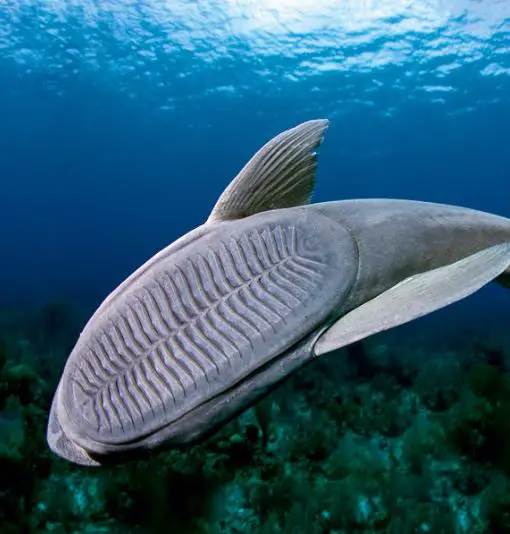Do you know that there is a unique fish that has evolved a special adaptation to attach itself to other marine creatures, traveling along as an aquatic hitchhiker? Welcome to the fascinating world of remora fish, where nature’s ingenuity is on full display. In this article, we will delve into the intricacies of these remarkable fish and explore their captivating traits and interactions within the marine ecosystem.
You may also want to read about Dall’s porpoise.
Introduction to Remora Fish
The remora fish, scientifically known as Echeneidae, is a group of marine fish that belong to the order Perciformes. They are known for their specialized dorsal fin, called a “sucking disc,” which allows them to attach themselves to various marine organisms, including sharks, whales, and turtles. This unique adaptation has earned them the nickname “suckerfish” or “shark-suckers.”
Physical Characteristics of Remora Fish
Remora fish typically have elongated bodies and range in size from a few inches to over two feet in length. They have a streamlined shape, enabling them to glide effortlessly through the water. The most distinguishing feature of the remora is its modified dorsal fin, located on the top of its head, which acts as a suction pad, enabling it to attach to host organisms.

Habitat and Distribution
Remora fish are found in tropical and subtropical oceans around the world. They are commonly encountered in coral reefs, open waters, and near the surface of the ocean. Different species of remora fish may exhibit preferences for specific habitats, but they are generally adaptable and can be seen in a variety of marine environments.
Unique Symbiotic Relationship
One of the most intriguing aspects of remora fish is their symbiotic relationship with larger marine creatures. By attaching themselves to a host organism, remoras gain various benefits, such as transportation, protection, and access to leftover food scraps from their host’s meals. In return, the remoras provide a cleaning service by removing parasites and dead skin from their hosts, promoting host health.
Feeding Habits and Adaptations
Remora fish have adapted their feeding strategies to take advantage of their hitchhiking lifestyle. While they primarily feed on leftovers and scraps from their host’s meals, they are also capable of independent feeding. Remoras have a streamlined body shape and a mouth equipped with rows of sharp teeth, enabling them to catch small fish and other prey items when detached from a host.
Reproduction and Life Cycle
Remora fish reproduce through external fertilization, where males release sperm to fertilize the eggs released by females. Once fertilized, the eggs hatch into larvae, which go through a pelagic stage, drifting in the open ocean. As they develop, they undergo metamorphosis, eventually acquiring the specialized dorsal fin and transitioning into the hitchhiking lifestyle.
Once the remora fish larvae have developed their specialized dorsal fin, they seek out potential host organisms to attach to. Finding a suitable host is essential for their survival and growth. Once attached, the remoras undergo further development, maturing into adults capable of reproducing.

Fascinating Behaviors of Remora Fish
Remora fish exhibit intriguing behaviors that showcase their adaptability and survival skills. They are skilled swimmers, utilizing their streamlined bodies and powerful tails to navigate through the water with precision. When attached to a host, remoras have the ability to adjust their position on the host’s body, allowing them to maximize the benefits they receive.
Interactions with Other Marine Life
The presence of remora fish can have a significant impact on the behavior and physiology of their host organisms. Larger hosts, such as sharks, may be affected by the added drag caused by the attached remoras. However, some studies suggest that the presence of remoras might not significantly impede the movement and overall performance of their hosts.
Importance in Ecosystems
Remora fish play a role in maintaining the health and balance of marine ecosystems. By acting as cleaners, they help reduce parasite loads on their host organisms, contributing to the overall well-being of the host populations. Additionally, as they consume leftover food scraps, they contribute to nutrient recycling, enriching the surrounding environment.
Conservation of Remora Fish
While remora fish populations are generally considered stable, the health of their habitats and the well-being of their host organisms are crucial for their survival. Conservation efforts aimed at protecting coral reefs, reducing pollution, and promoting sustainable fishing practices contribute to the conservation of remora fish and the preservation of their ecological roles.
The Role of Remora Fish in Human Culture
Remora fish have captured the human imagination throughout history, appearing in various cultural and artistic representations. They have been depicted in ancient cave paintings, mentioned in folklore, and even found their way into modern literature and artwork. Their unique adaptation and symbiotic lifestyle continue to inspire awe and curiosity among people worldwide.
Unveiling Myths and Misconceptions
Several myths and misconceptions surround remora fish. One common misconception is that they harm their host organisms. However, research suggests that the relationship between remoras and their hosts is generally mutually beneficial and does not cause significant harm to the host. Dispelling such myths promotes a better understanding of the true nature of remora fish.
Research and Study on Remora Fish
Scientists and researchers continue to study remora fish to uncover more about their biology, behavior, and ecological interactions. Through field observations, laboratory experiments, and advanced technologies, researchers aim to gain deeper insights into the unique adaptations, genetics, and ecological roles of these fascinating creatures.
Conclusion
Remora fish, with their specialized dorsal fin and hitchhiking lifestyle, provide us with a glimpse into the wonders of nature’s adaptations. Their symbiotic relationship with host organisms, feeding strategies, and behaviors make them captivating subjects of study and appreciation. As we explore the mysteries of the underwater world, let us recognize and protect the habitats that support the remarkable diversity of marine life, including the incredible remora fish.
FAQs (Frequently Asked Questions)
1. Are remora fish found in freshwater habitats?
No, remora fish are primarily found in marine environments and are not known to inhabit freshwater habitats.
2. Can remora fish attach themselves to humans?
While it is rare for remora fish to attach themselves to humans, there have been instances where swimmers or divers have reported being temporarily “hitched”.
3. Can remora fish harm humans?
Remora fish are generally harmless to humans. Their suction disc and small size make it unlikely for them to cause any significant harm. In rare cases where a remora attaches itself to a human, it can be easily detached without causing injury.
4. Commercial and Recreational Interactions
Remora fish occasionally interact with commercial and recreational activities. In some regions, fishermen consider them a nuisance as they may attach themselves to fishing gear or catch. However, in certain cultures, remora fish are valued for their perceived luck-bringing properties and are even seen as a sign of a good catch.
5. Potential Impacts of Climate Change
As with many marine species, remora fish may face potential impacts from climate change. Rising ocean temperatures, ocean acidification, and habitat degradation can disrupt their ecosystems and alter the availability of suitable host organisms. Continued research and monitoring are crucial to understand and mitigate these potential threats.
6. The Curiosity of Scientists
Remora fish have captivated the curiosity of scientists for centuries. Their unique adaptation and symbiotic behavior continue to inspire research on topics such as adhesion mechanisms, evolutionary biology, and host-remora interactions. Scientists are dedicated to unraveling the mysteries surrounding these fascinating creatures.
7. Cultural Significance in Different Regions
Remora fish hold cultural significance in various regions around the world. In some cultures, they are considered symbols of good luck, protection, or even as spiritual guides. Their presence in folklore and traditions highlights the deep connection between humans and the natural world.
8. Future Directions in Remora Fish Research
Future research on remora fish aims to delve deeper into their physiology, ecology, and genetic diversity. By utilizing advanced technologies such as genetic analysis and underwater imaging, scientists hope to uncover more about their evolutionary history, population dynamics, and their role in maintaining healthy marine ecosystems.
